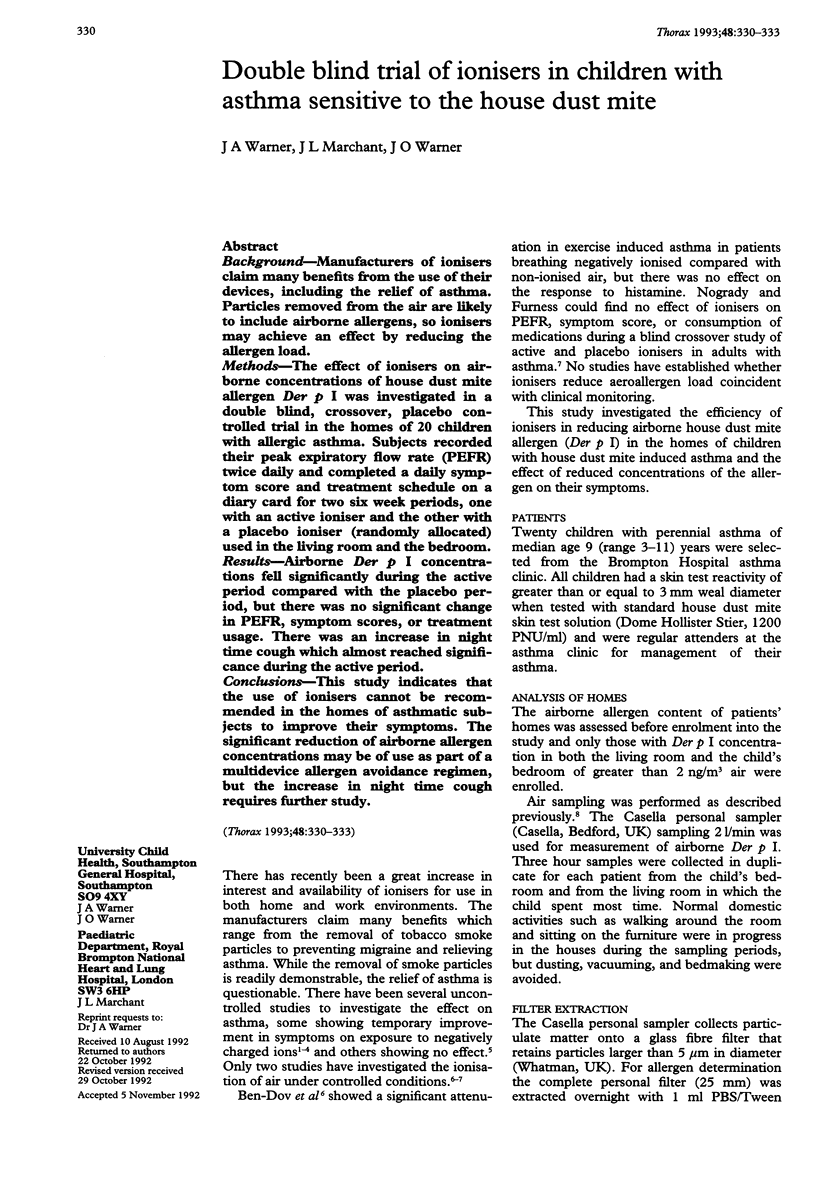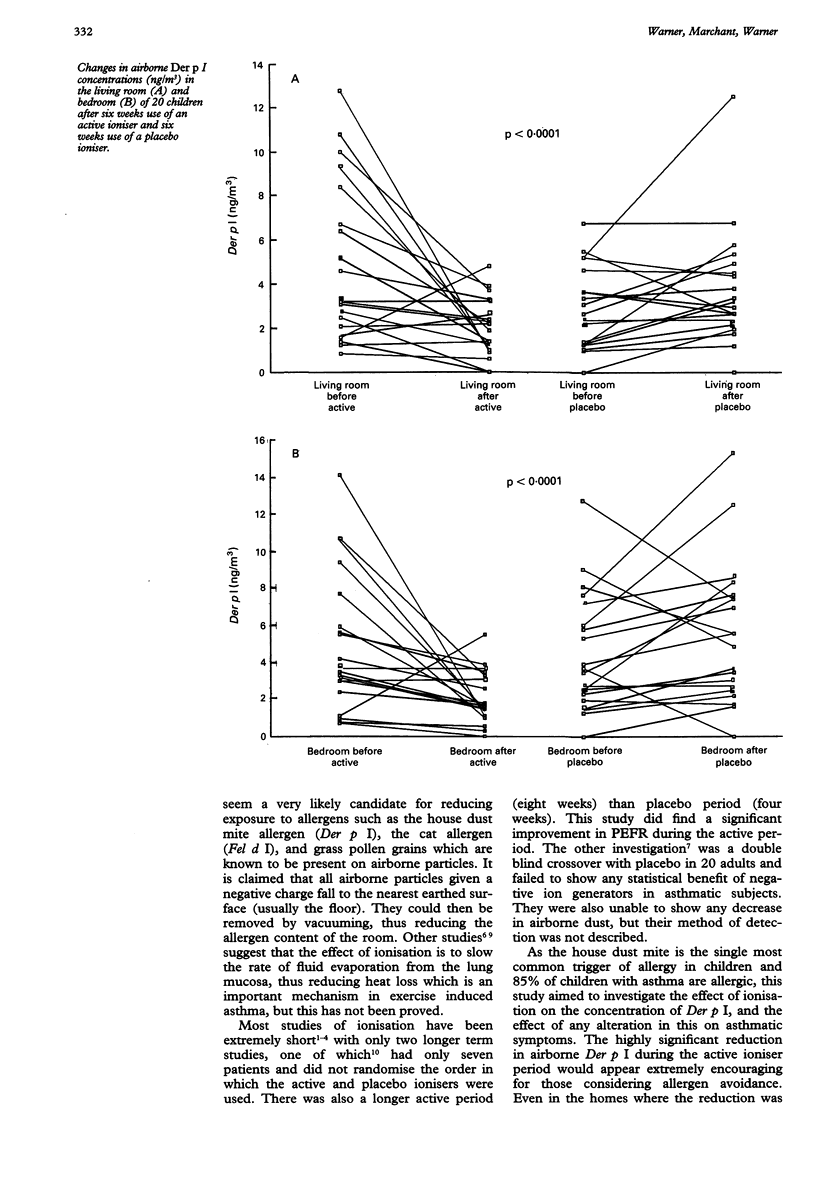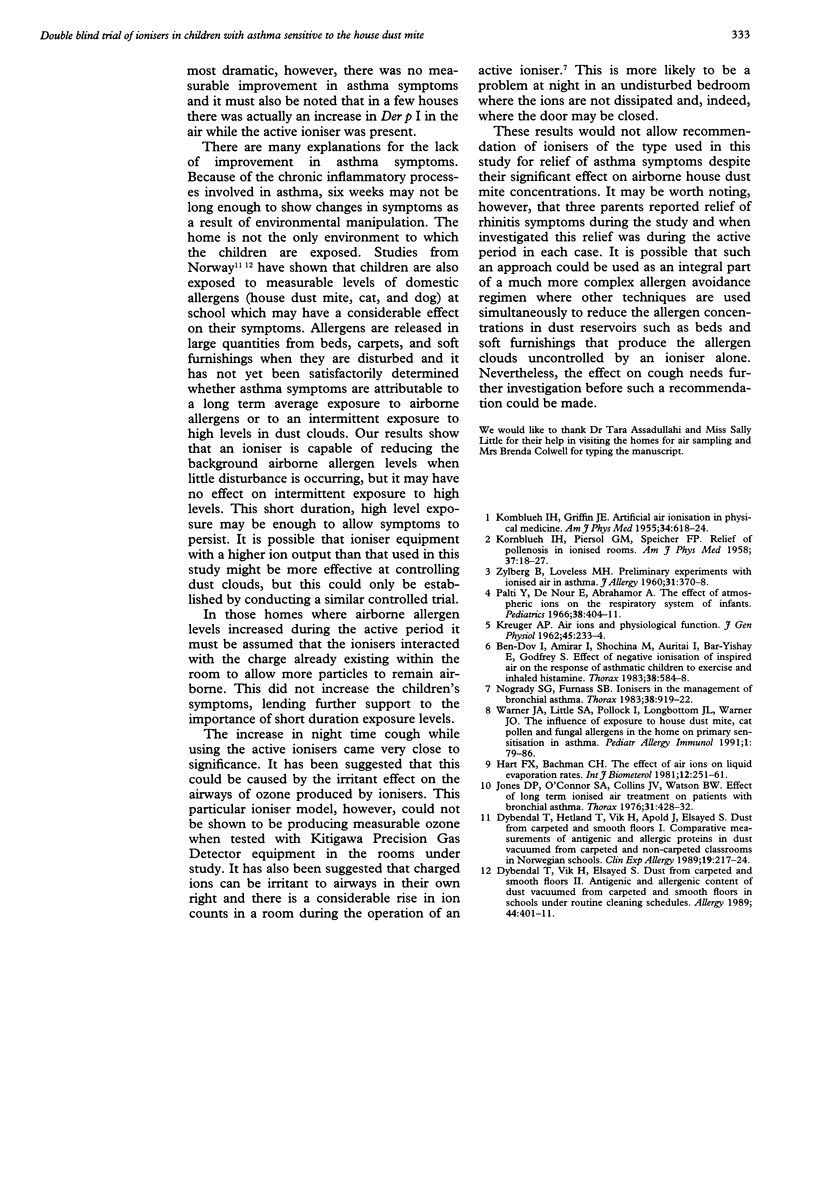Abstract
BACKGROUND--Manufacturers of ionisers claim many benefits from the use of their devices, including the relief of asthma. Particles removed from the air are likely to include airborne allergens, so ionisers may achieve an effect by reducing the allergen load. METHODS--The effect of ionisers on airborne concentrations of house dust mite allergen Der p I was investigated in a double blind, crossover, placebo controlled trial in the homes of 20 children with allergic asthma. Subjects recorded their peak expiratory flow rate (PEFR) twice daily and completed a daily symptom score and treatment schedule on a diary card for two six week periods, one with an active ioniser and the other with a placed ioniser (randomly allocated) used in the living room and the bedroom. RESULTS--Airborne Der p I concentrations fell significantly during the active period compared with the placebo period, but there was no significant change in PEFR, symptom scores, or treatment usage. There was an increase in night time cough which almost reached significance during the active period. CONCLUSIONS--This study indicates that the use of ionisers cannot be recommended in the homes of asthmatic subjects to improve their symptoms. The significant reduction of airborne allergen concentrations may be of use as part of a multidevice allergen avoidance regimen, but the increase in night time cough requires further study.
Full text
PDF



Selected References
These references are in PubMed. This may not be the complete list of references from this article.
- Ben-Dov I., Amirav I., Shochina M., Amitai I., Bar-Yishay E., Godfrey S. Effect of negative ionisation of inspired air on the response of asthmatic children to exercise and inhaled histamine. Thorax. 1983 Aug;38(8):584–588. doi: 10.1136/thx.38.8.584. [DOI] [PMC free article] [PubMed] [Google Scholar]
- Dybendal T., Hetland T., Vik H., Apold J., Elsayed S. Dust from carpeted and smooth floors. I. Comparative measurements of antigenic and allergenic proteins in dust vacuumed from carpeted and non-carpeted classrooms in Norwegian schools. Clin Exp Allergy. 1989 Mar;19(2):217–224. doi: 10.1111/j.1365-2222.1989.tb02367.x. [DOI] [PubMed] [Google Scholar]
- Dybendal T., Vik H., Elsayed S. Dust from carpeted and smooth floors. II. Antigenic and allergenic content of dust vacuumed from carpeted and smooth floors in schools under routine cleaning schedules. Allergy. 1989 Aug;44(6):401–411. doi: 10.1111/j.1398-9995.1989.tb04171.x. [DOI] [PubMed] [Google Scholar]
- Jones D. P., O'Connor S. A., Collins J. V., Watson B. W. Effect of long-term ionized air treatment on patients with bronchial asthma. Thorax. 1976 Aug;31(4):428–432. doi: 10.1136/thx.31.4.428. [DOI] [PMC free article] [PubMed] [Google Scholar]
- KORNBLUEH I. H., GRIFFIN J. E. Artificial air ionization in physical medicine; preliminary report. Am J Phys Med. 1955 Dec;34(6):618–631. [PubMed] [Google Scholar]
- KORNBLUEH I. H., PIERSOL G. M., SPEICHER F. P. Relief from pollinosis in negatively ionized rooms. Am J Phys Med. 1958 Feb;37(1):18–27. [PubMed] [Google Scholar]
- KRUEGER A. P. Air ions and physiological function. J Gen Physiol. 1962 Mar;45(4):233–241. doi: 10.1085/jgp.45.4.233. [DOI] [PMC free article] [PubMed] [Google Scholar]
- Nogrady S. G., Furnass S. B. Ionisers in the management of bronchial asthma. Thorax. 1983 Dec;38(12):919–922. doi: 10.1136/thx.38.12.919. [DOI] [PMC free article] [PubMed] [Google Scholar]
- ZYLBERBERG B., LOVELESS M. H. Preliminary experiments with ionized air in asthma. J Allergy. 1960 Jul-Aug;31:370–374. doi: 10.1016/0021-8707(60)90073-3. [DOI] [PubMed] [Google Scholar]


